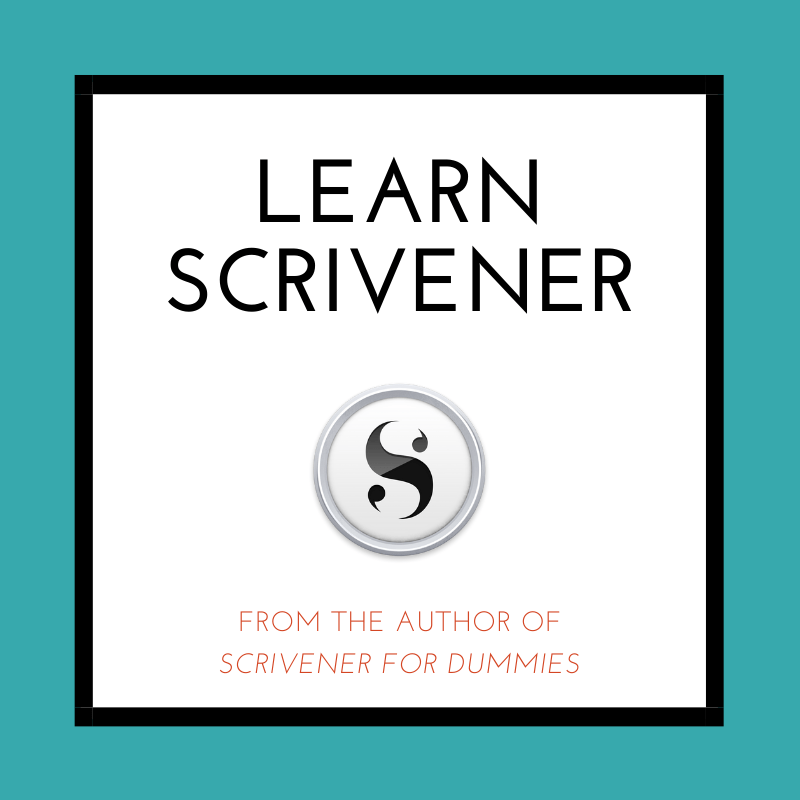
I understand. The blank page is daunting. Where do I even begin? It might surprise you to know that your journey to successful blogging begins well before your fingers touch the keyboard. It starts with a decision – a topic. Finding the right one isn’t luck; it’s a process, a methodical one. Here’s where I come in: I can guide you through that process.
The first step is to pick a topic that resonates with your interests or expertise. Why? Because genuine passion translates into more engaging content. You’re not just writing; you’re sharing a piece of yourself. Think about the subjects you love to talk about, the hobbies you enjoy, or the work you do. That’s where you’ll find your blog’s soul.
Once you’ve got a few ideas bubbling, it’s time for some reconnaissance. Dive into keyword research and trend analysis to see what’s stirring interest online. But remember, your aim isn’t just to chase trends; it’s to find the sweet spot where your interests align with what readers are seeking.
And don’t overlook your unique perspective. This is your ace. You have views and insights no one else does. That’s valuable. That’s the content that stands out. So, refine your topic with your twist on it. This is how you start creating content with a purpose, content that will find its audience.
With your topic firmly in hand, you’re ready to progress. But beware, diving straight into writing is like embarking on a voyage without a map. What you need now is a plan. A roadmap that will guide you from title to conclusion. Your plan isn’t just about what you want to say; it’s about saying it effectively. So, my next advice? Craft your plan.

Blueprint for Blogging: Formulating a Plan
Once you’ve chosen a topic that sparks your interest and promises to deliver value to your readers, the next critical step is to sketch out your roadmap \’ a comprehensive plan for your blog post. Why is planning pivotal? Think of it as your GPS, guiding you from the opening word to the concluding sentence, ensuring you cover all vital points smoothly and avoid veering off topic.
Creating an outline is like constructing the skeleton of your blog post. Start with the major sections or headers, which act as checkpoints throughout your piece. Under each header, jot down key ideas you want to discuss. This not only provides structure but also helps prevent writer’s block, as you’ll always know what to tackle next.
Consider what goals you want your blog post to achieve. Is it to inform, persuade, entertain, or a blend of these elements? Clarify this objective early on, making it easier for you to craft content strategically designed to meet these goals. Moreover, decide which keywords are relevant to your topic, and ensure to weave them naturally into your headers and content to aid with search engine optimization (SEO).
Finally, it’s wise to set a realistic timeline for your writing process. This includes deadlines for the first draft, revision stages, and publication. Discipline in your writing schedule will ensure consistent quality and progress, allowing your blog to grow its readership steadily over time.

Know Your Readers: Defining Your Target Audience
Before I write a single word, I focus on who I’m writing for. You’ll find this makes your content more purposeful and compelling. When you understand your target audience, you tailor your message to their interests, which in turn often leads to greater engagement and conversion.
Start by asking a few simple questions: Who is most likely to benefit from the content? What challenges are they facing that your post can solve? Which demographics are you speaking to, such as age, occupation, or location?
Creating audience personas can be a powerful tool here. Imagine a fictional reader who represents your ideal audience. Give them a name, job, and pain points. Whenever you’re writing, it’s like you’re speaking directly to them, which makes your content feel personal and relevant.
By clarifying who your readers are, you can ensure every piece of advice, every story, and even the tone resonates with them. Profiles of your target audience guide your content strategy, helping you create posts that are met with nods of agreement, shares on social media, and constructive comments.
Another tip: Use surveys, social media polls, or comments on your blog to gather insights about your audience. This direct feedback can refine your understanding and let you serve them even better.
With a well-defined audience, you’re set to keep their attention with a headline that reaches out from the screen and invites them into the conversation, a practice I turn to next.
The Art of Titles: Writing a Clear Headline
Your headline is your first impression, the moment when a reader decides to invest their time or scroll past. With so much content vying for attention, yours needs to stand out. Here’s how you ensure it does.
A compelling headline is a perfect blend of clarity, curiosity, and conciseness. Stick to a straightforward message that conveys the essence of your content. It’s crucial that the title reflects the post accurately to build trust with your readers.
You may find keyword research to be a valuable tool. Identifying common search terms can increase your post’s visibility in search engine results. But remember, while SEO is important, a natural-sounding title that prioritizes reader experience takes precedence.
Several headline formulas have proven effective. ‘How-tos, listicles, and question-based titles often perform well. They promise a clear benefit and structure to your audience, making it more likely they’ll click through.
For those less familiar with SEO and headline creation, online tools can offer guidance. They not only suggest keywords but also evaluate your headline’s effectiveness, providing an objective perspective on its likely appeal.
Remember, the goal is to invite your audience into a conversation, not just to click a link. Your title should set the tone for this interaction. By mastering the art of headline writing, you’ve taken a significant step towards engaging your readers and keeping them on the page.

Hook ‘Em from the Start: Crafting an Engaging Introduction
An introduction is your handshake with the reader – it’s where you make your first impression. To hook readers, your intro needs to do more than simply start the post; it needs to captivate and intrigue. Start by asking a question, sharing a startling statistic, or offering a relatable anecdote. This approach draws readers in and piques their curiosity, setting the stage for the value-packed content to follow.
Your introduction should also promise what’s to come. Laying out the benefits of reading further assures readers their time investment will be worthwhile. Remember, the goal here is not just to inform but to inspire readers to stick around. Make sure they understand that by the end of your post, they’ll have gained new insights or useful knowledge.
Now, seamless transitions are crucial as you lead into the next section of your post. Your readers have been primed with an engaging opening and are on the cusp of discovering the full value of your content. Prepare to deliver on the promise of your intro by immediately establishing the importance of your topic in the coming section.

Promise Value Early: Establishing Importance in the Opening
I know you’re here because you’ve got something valuable to share. Right in the opening, your readers should grasp what’s in it for them. That’s why it’s crucial to nail this part. Here’s how you ensure your first paragraph does just that. Start by sharing a problem that your post will solve. Are you addressing a common headache, providing a ‘how-to’ guide, or sharing insight on a hot topic? Make it clear.
The opening lines are where you do some heavy lifting. Lay out the key benefits your readers will gain by sticking around. Tell them how they will be better off after reading your post. Perhaps they’ll learn a new skill, save money, or find a solution to a nagging issue.
Grounding your introduction with a factual statement or an authoritative quote can be powerful. It sets a firm foundation for your credibility. Remember to keep your language straightforward and accessible. No jargon or technical terms that might alienate them right off the bat.
Close your section by transitioning smoothly into the meat of your content. Here’s a tip: use phrases that guide your readers, like ‘Now, let’s get down to the details,’ or ‘With the groundwork laid, let’s explore the steps.’ It signals that you’re about to enrich their understanding with the detailed content that follows in your next section.

From Foundation to Finish: Expanding Your Blog Post
Now that you’ve assured your readers of the value your post holds, it’s time to deliver on that promise. Think of this section as the heart of your post, where you’ll provide the meat on the bones of your topic. Expanding on your blog post requires care. Every paragraph you write should offer a new piece of the puzzle, ensuring that your readers feel they’re gaining valuable knowledge with each line they read.
Begin by breaking down your topic into key points or questions that you will address. This approach helps not only organize your thoughts but also guide your readers through a logical progression of ideas. Then, substantiate each point with research, examples, and data. Remember, quality triumphs over quantity. It’s better to have a few well-supported points than a multitude of shallow ones.
Credible sources can significantly bolster the authority of your post. Whether you link to academic journals, industry reports, or expert blogs, ensure that your sources are trustworthy and relevant. Quoting or citing these sources adds depth to your content and shows your commitment to thoroughness.
As you lay out your supporting details, consider varying the presentation. Incorporating visual elements like images, infographics, or videos can make complex information more digestible and keep the piece visually stimulating. Balance these visuals with the text and ensure they add value rather than serve as mere decoration.
Transitioning smoothly, imagine that with every fact and detail you provide, you are building a bridge to your conclusion. You want your readers to effortlessly walk across to the end, feeling informed and ready to act. Establish this by ending with a compelling point or question that leads into your call to action.

Capture Continuous Engagement: Curating a Strong Call to Action
A blog post isn’t just a monologue; it’s a conversation starter. After providing insightful details and facts at the heart of the article, it’s crucial to guide your readers on what to do next. This is where a strong call to action (CTA) comes into play.
The best CTAs are simple yet powerful, prompting readers to take a specific action. Do you want them to subscribe to a newsletter, comment with their opinions, or check out another blog post? Make it clear and make it count. Use action verbs and create a sense of urgency without being pushy. Think ‘Subscribe to learn more’ or ‘Comment with your thoughts today’.
A well-placed CTA can keep the interaction going and help build a community around your blog. It’s an invitation to engage further, not just a closure to your post. If your content is valuable, readers will want to know what you expect from them next. Be intentional and strategic about your CTA placement – often, the best spot is after you’ve made your case compellingly.

Seal the Deal: Wrapping Up Your Blog Post
Now that you’ve guided your readers through a wealth of information, it’s time to bring your post to a close. This doesn’t mean just stopping abruptly or leaving your audience hanging, but instead giving them a sense of completion.
Start your conclusion by summarizing the main points of your post. This recap provides clarity and reinforces the value of what they’ve read. It’s your chance to remind them of the key takeaways and how they can apply this new knowledge.
Encourage your readers to reflect on how the post relates to them personally. Ask a question or propose a thought exercise that prompts personal integration of your insights.
Don��t hesitate to point readers toward additional resources, whether it’s another related blog post, an upcoming webinar, or an e-book. Offering further learning opportunities shows dedication to their education and deepens their engagement with your brand.
Finally, make it easy for readers to share their thoughts by inviting comments and questions or sharing the post on social media. Engagement isn’t one-sided, and a thriving comments section can be just as informative as the blog post itself.
Writing blog posts as a beginner can seem daunting, but remember, every expert was once a beginner. With each post you write, you’ll refine your style and better understand your audience. KEEP WRITING, stay genuine, and always aim to bring something valuable to your readers’ lives.
Happy Writing!
Kevin
I hope you found this blog post helpful. If you did, please share it with your friends and leave a comment below. And if you want to learn more about writing, check out my other blog posts on 3D printing, affiliate marketing, and writing. Thanks for reading! 😊
Make them laugh, make them think, but above all, make them feel.
As a wordsmith seeking to enhance your writing prowess, you’ll find many remarkable writing tools and apps at your disposal. Let’s explore some of the best options:
- Scrivener: A beloved companion for authors, Scrivener offers a treasure trove of features. It helps you track plot threads, store character notes, structure your work, and—most importantly—get serious writing done. While it’s not free, the investment is well worth it for serious writers1.
- Ulysses: If distraction-free writing is your goal, Ulysses is your muse. Its minimalist interface allows you to focus solely on your words. Plus, it syncs seamlessly across devices, ensuring your creativity flows wherever you are2.
- iA Writer: Ideal for online writing (think Medium or WordPress), iA Writer combines simplicity with elegance. Its clean design encourages a flow state, making it a favorite among bloggers and content creators2.
- Plottr: For those who thrive on outlining, Plottr is a gem. It helps you map out your novel, organize scenes, and keep your plot threads in check. Whether you’re a pantser or a plotter, Plottr has your back3.
- Reedsy Book Editor: If you’re working on a book, Reedsy’s online editor is a fantastic choice. It’s free, collaborative, and offers a straightforward interface for drafting and editing your masterpiece4.
- yWriter: Scene-based writers rejoice! yWriter lets you organize your novel into scenes, track characters, and maintain a bird’s-eye view of your work. It’s a powerful tool for structuring your narrative2.
Remember, the best writing app is the one that aligns with your unique needs and writing style. Whether you’re crafting screenplays, novels, or blog posts, these tools will be your trusty companions on your literary journey. Happy writing! 📝✨
Creating a blueprint for your blogging journey is a fantastic idea! It’s like having a map that guides you through the blogging landscape, ensuring you stay on track and reach your destination successfully.
Here’s a model outline to help you formulate a plan for your blog:
- Define Your Blog’s Purpose and Goals
- What do you want to achieve with your blog?
- Who is your target audience?
- What unique value will your blog provide?
- Choose Your Blogging Platform
- Research and select the platform that best suits your needs.
- Select and Register Your Domain Name
- Choose a memorable and relevant domain name for your blog.
- Design Your Blog
- Decide on the layout, color scheme, and overall aesthetic.
- Create Engaging Content
- Plan your content calendar.
- Write posts that resonate with your audience.
- Launch and Promote Your Blog
- Use social media, SEO, and other marketing strategies to attract readers.
- Analyze and Adapt
- Monitor your blog’s performance.
- Make adjustments based on feedback and analytics.
Remember, the key to a successful blog is consistency, quality content, and engagement with your readers. Good luck with your blogging adventure! If you need more detailed guidance, there are comprehensive resources available online that can walk you through each step of launching your first blog1, crafting an effective blogging business plan2, and even providing templates to get you started34.
Happy blogging! 🚀
Check out Grammarly!



